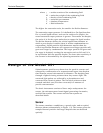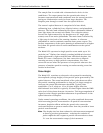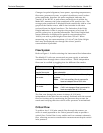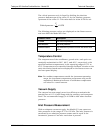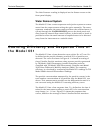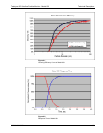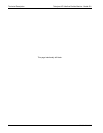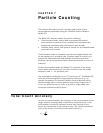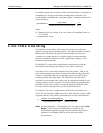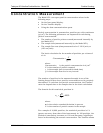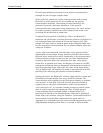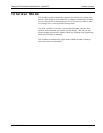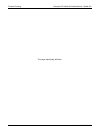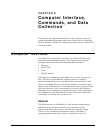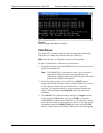
Particle Counting Teledyne API Ultrafine Particle Monitor - Model 651
62 07506C DCN6727
In totalizer mode, the accuracy of the concentration is increased by
sampling for a longer period and counting more particles. The
concentration is displayed on the front panel in totalizer mode and
is calculated by:
tQ
n
sensor theinflow aerosol of volume
counts total
ionconcentrat
where
Q = Sample flow rate ration. It is very close to its nominal value of
0.12 L/min.
t = sample time in sec.
Live-Time Counting
Coincidence occurs when more than one particle occupies the
optical sensing region simultaneously. The optical detector cannot
discriminate between the particles and multiple particles are
counted as a single particle. At higher particle concentrations,
particle coincidence begins to have a significant impact on the
measured concentration.
The Model 651 corrects for coincidence continuously with the
instrument electronics performing a “live-time” correction.
Live-time refers to the time between electrical pulses. This is the
total measurement time interval minus the time during which the
counter is disabled with one or multiple particles in the optical
sensing volume (the dead time). The dead time should not be
included in the sample time since only the particles already in the
viewing column can be counted. The actual particle concentration
therefore equals the number of counted particles divided by the
live-time (actual sample time) and the aerosol flow rate.
To measure live-time, a high-speed clock and accumulator are
used. The accumulator adds up the live time and the counter adds
up pulse counts. The particle concentration is then calculated by
rateflow aerosol
1
time-live daccumulate
particles counted ofnumber
a
C
Note: At concentrations > 10
6
particles/cm
3
, the status reads Over
Range. If this occurs, the Model 651 is outside of the
concentration operating range and the number of particles
shown on the display could be lower than the actual
concentration.



